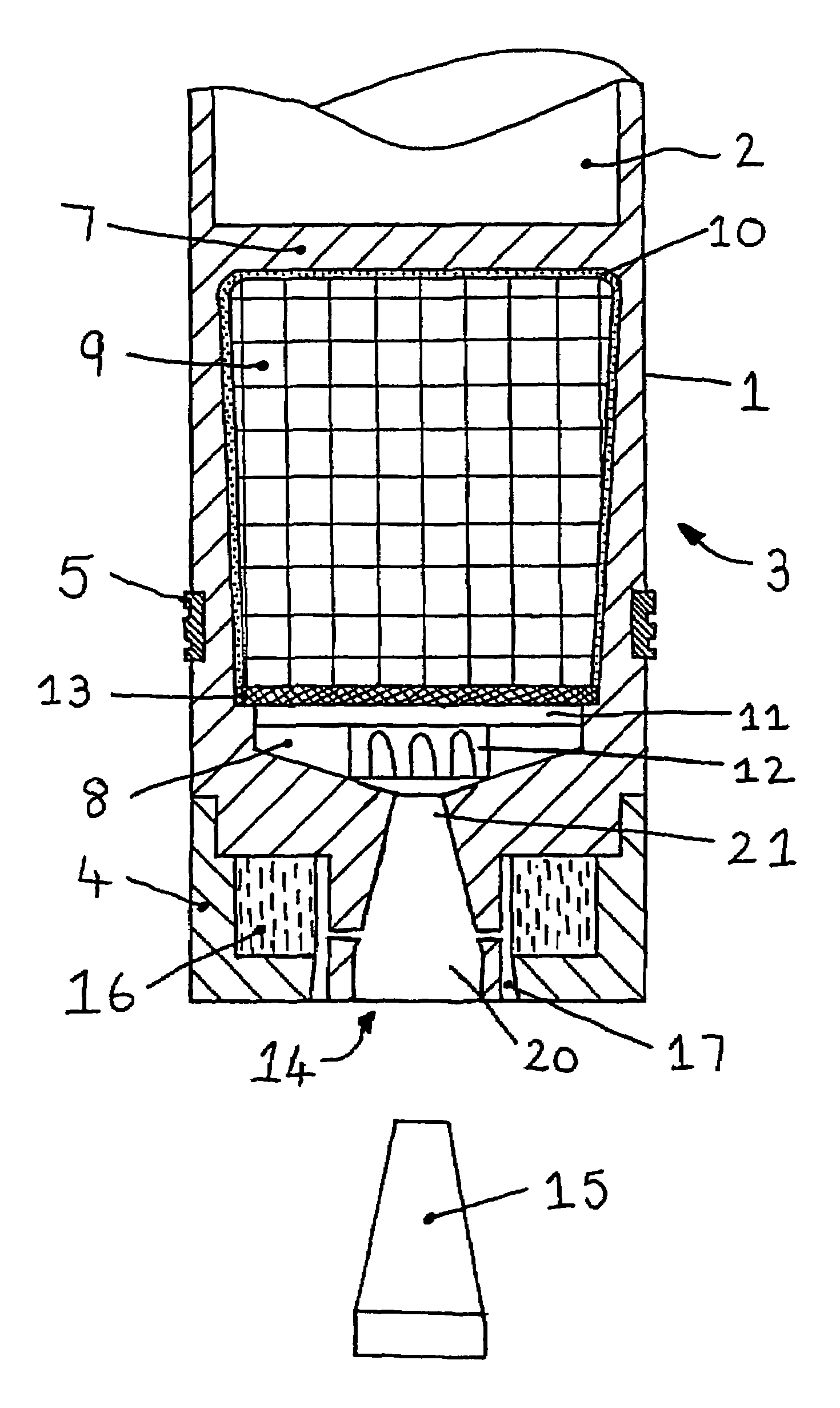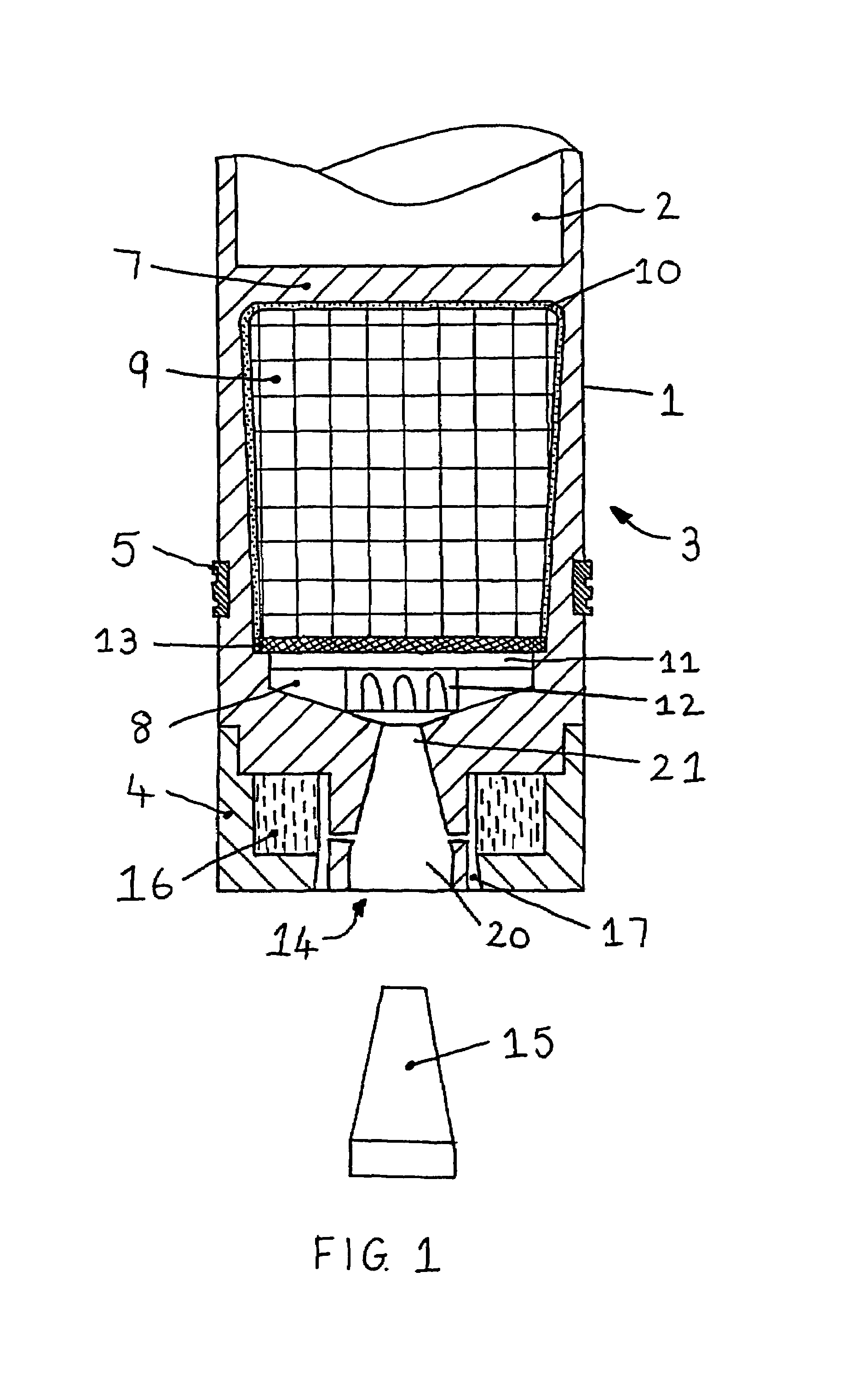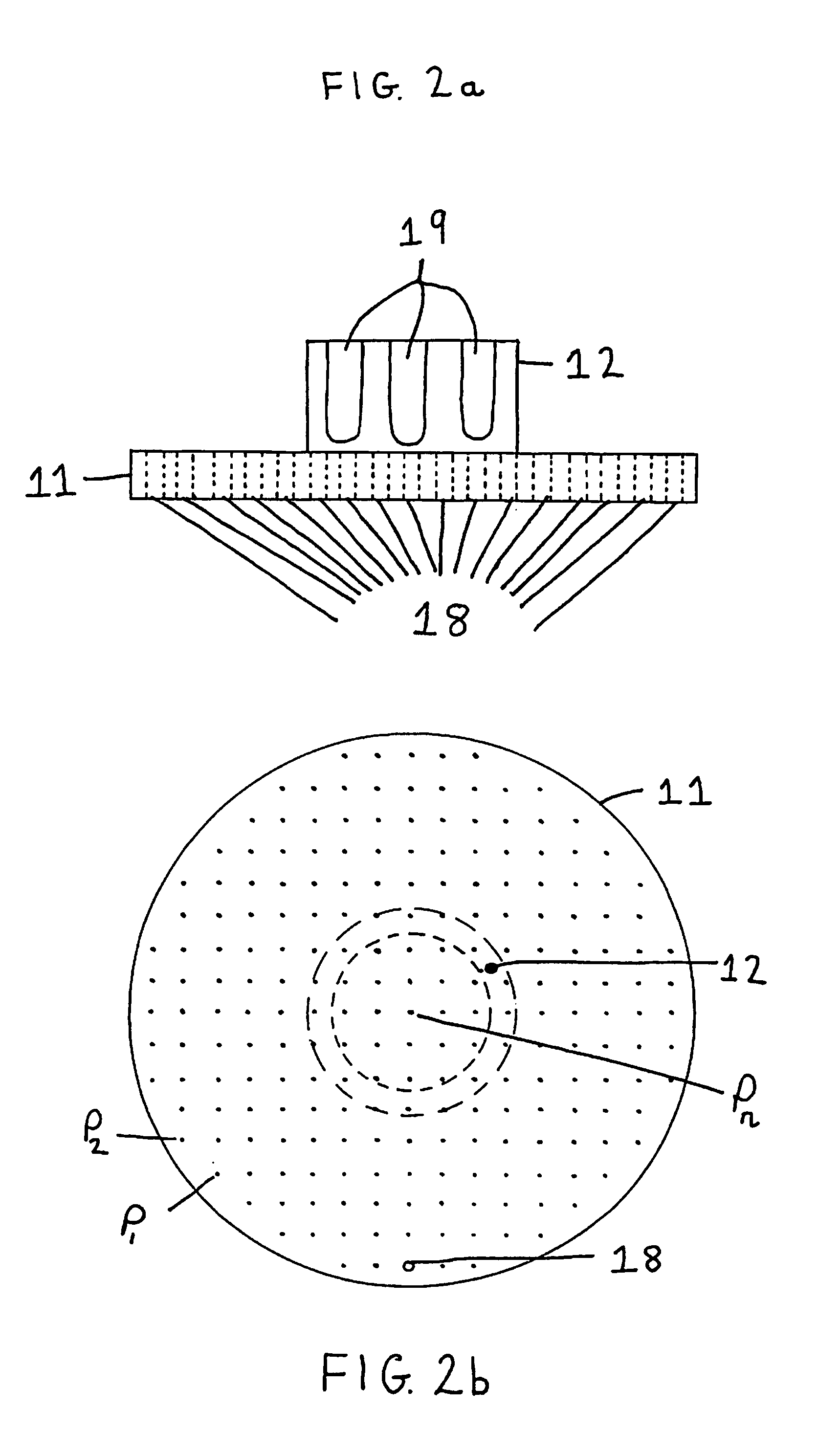Long range artillery shell
a technology of artillery shells and shells, applied in the field of long-range artillery shells, can solve the problems of catastrophic shell failure, general relativity high-cost munitions, and failure of the motor to ignite, and achieve the effect of reducing the drag on the bas
- Summary
- Abstract
- Description
- Claims
- Application Information
AI Technical Summary
Benefits of technology
Problems solved by technology
Method used
Image
Examples
Embodiment Construction
[0026]Referring now to FIG. 1 a 155 mm artillery shell is shown which generally comprises a payload volume 2, a rocket motor 3 and base bleed unit 4 and a driving band 5.
[0027]The payload volume 2 and the combustion chamber (shown containing propellant 9, burn inhibitor 10 and igniter material 13) are separated by a bulkhead 7 with the combustion chamber being defined by the wall of the shell 1. The volume of the combustion chamber is reduced towards the end distal from the bulkhead 7 to form a plenum chamber 8. A single grain of rocket propellant 9, having been previously cast in a burn inhibitor 10, is configured to fill the majority of the volume of the combustion chamber. The propellant 9 is prevented from entering the plenum chamber 8 by a thin perforated plate 11 and associated load ring 1-2. A layer of igniter material 13 for igniting the exposed end face of the propellant 9 is provided between the plate 11 and the propellant 9. The plenum chamber 8 can be vented by the rocke...
PUM
 Login to View More
Login to View More Abstract
Description
Claims
Application Information
 Login to View More
Login to View More - R&D
- Intellectual Property
- Life Sciences
- Materials
- Tech Scout
- Unparalleled Data Quality
- Higher Quality Content
- 60% Fewer Hallucinations
Browse by: Latest US Patents, China's latest patents, Technical Efficacy Thesaurus, Application Domain, Technology Topic, Popular Technical Reports.
© 2025 PatSnap. All rights reserved.Legal|Privacy policy|Modern Slavery Act Transparency Statement|Sitemap|About US| Contact US: help@patsnap.com



